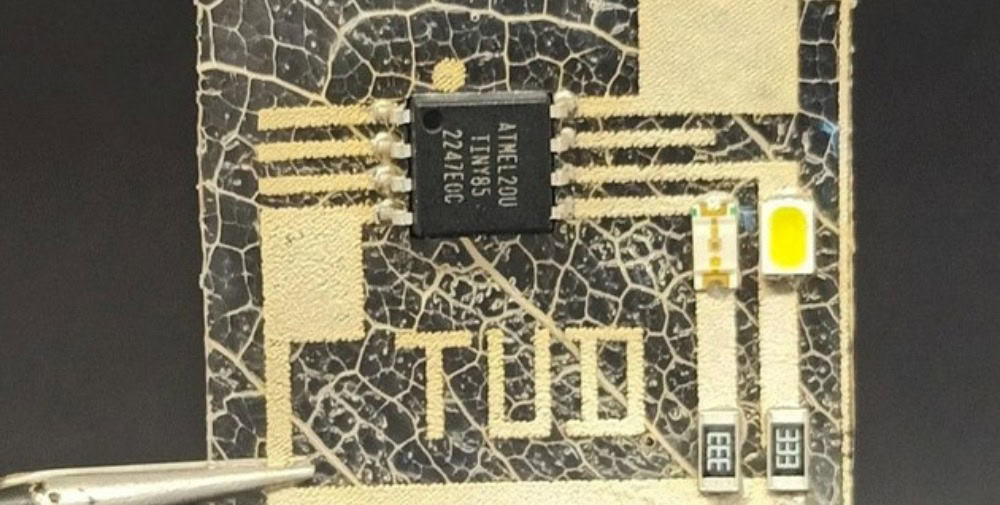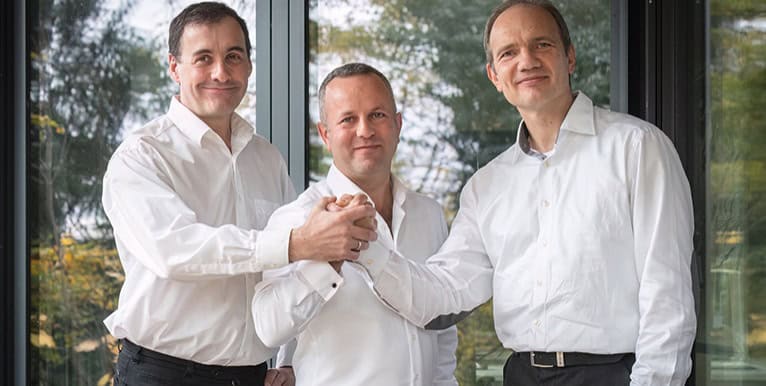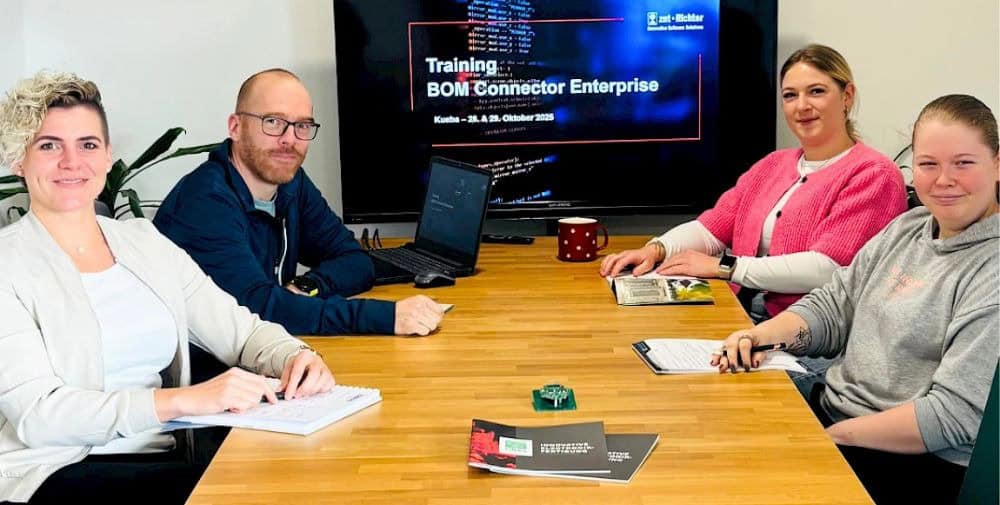A research team led by Prof. Karl Leo at TU Dresden has developed an innovative, nature-inspired solution that could revolutionize the electronics industry: “Leaftronics”. This innovative approach uses the natural structure of leaves to produce biodegradable electronic substrates, offering a sustainable, efficient and scalable solution to the global e-waste problem. These groundbreaking results have now been published in the journal “Science Advances”.

Electronic devices, from toys to smartphones, are made up of circuits. Certain substrates are used to manufacture these circuits. In commercial electronics, these are printed circuit boards (PCBs), which are made of glass fiber-reinforced epoxy resin. Most of these materials are not recyclable, let alone biodegradable. Given the sheer volume of electronic waste of more than 60 million tons per year (of which over 75% is not collected worldwide), there is an urgent need for sustainable alternatives.
Existing research has focused on developing biodegradable natural polymers as materials, but these have proven unsuitable due to issues with heat stability and resistance to chemicals. The conflict between biodegradability, which requires loosely bound molecules, and thermal or chemical stability, which requires tightly bound molecules, has long been a major challenge.
Now, a research team at the Institute of Applied Physics at TU Dresden, led by Professor Karl Leo, has taken a major step forward and developed Leaftronics – an approach that uses the natural structure of leaves to produce biodegradable electronic substrates with improved properties. Their results promise a sustainable, efficient and scalable solution to the global e-waste problem.
Nature-inspired innovation: quasi-fractals made from leaves
The breakthrough is based on the discovery that quasi-fractal lignocellulosic structures in natural leaves, which serve as a scaffold for the living cells of a leaf, can be used to reinforce biodegradable, wet-processed polymer films. “We were surprised to find that these natural, quasi-fractal lignocellulosic scaffolds not only support living cells in nature, but can also hold soluble polymers together, even at relatively high temperatures at which these polymers should normally start to flow,” explains Dr. Hans Kleemann, head of the Organic Building Elements and Systems Group at the Institute of Applied Physics. The discovery stems from the work of Dr. Rakesh R. Nair, who researched the implementation of natural structures for modern electronic applications as part of his recently completed doctorate. “We see that the embedded natural quasi-fractal structure appears to thermomechanically stabilize polymer films without affecting their biodegradability,” adds Rakesh Nair.
The researchers have shown that these lignocellulose-reinforced polymer films can withstand the manufacturing process for soldered circuits and support modern thin-film devices such as organic light-emitting diodes (OLEDs). The smoothness of the films, an important prerequisite for the deposition of ultra-thin material layers, opens the door for the production of high-performance thin-film electronics on these substrates.
The promise of ‘Leaftronics’
Leaftronics represents a new paradigm for electronic materials in which biological structures are used to improve the properties of polymers without the need for intensive chemical modification. In addition to their technical advantages, these substrates have a carbon footprint three times smaller than paper. When the devices have reached the end of their life cycle, the substrates can be easily degraded in the soil or processed in biogas plants, allowing the recovery of electronic components or valuable materials for recycling purposes.
A sustainable future for electronics
The development of Leaftronics could have far-reaching implications for numerous industries, from consumer electronics to renewable energy. As the world strives for greener technologies, Leaftronics offers a glimpse into the future of electronics, where high-performance devices can go hand in hand with environmental sustainability.
“This work points to a promising fusion of nature and technology and offers a sustainable way forward as we strive to reduce waste and combat climate change – an important step towards a circular economy in electronics,” explains Karl Leo, Professor of Optoelectronics and Director of the interdisciplinary center “Dresden Integrated Center for Applied Physics and Photonic Materials (DC IAPP).
_ _ _ _ _ _
Further links
👉 Original publication
👉 https://tu-dresden.de
Photo: TU Dresden
_ _ _ _ _
Note to the text
This is an automatic translation with DeepL.com. Read the original text in German.




